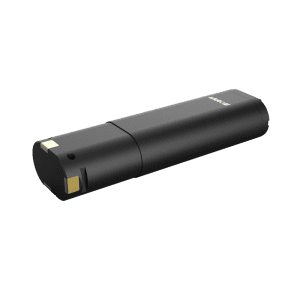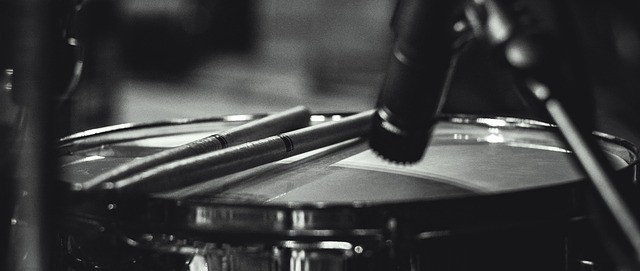The ease of cordless power tools is a must for everyone.
The truth is that a cordless tool’s rechargeable battery determines how dependable it is.
The battery is dead and worthless the instant it loses its ability to retain a charge.
You may not realize that a battery that seems to be dead is really just half dead, allowing you to reuse the battery.
You may learn more about the two ways to restart a dead lithium battery here.
To find out whether the battery is dead, you must first determine if it is.
You may do this by reading How to Check If a Lithium Battery is Dead.
After a battery has been jumpstarted, you must read How to Charge A Dead Lithium-Ion Battery – Charging And Reviving to prevent charging the battery improperly.
Can A Lithium Battery Be Jumpstarted At Home?
Yes, you can jumpstart.
To restart a dead battery, you will need one fully charged battery.
Stack the batteries together.
Then, using two short insulated wires, connect the two batteries by matching their polarities.
Positive to positive and negative to negative are the two polarities present in the batteries.
The process will assist in transferring energy from the active battery to the depleted one.
After about five minutes of waiting, you must unplug the connections and insert the dead battery into the tool’s battery charger.
The jumpstart is effective if the battery is charging.
When the battery is completely charged, leave it in the charger for an hour.
Try jumpstarting the battery again if it doesn’t recharge; if that doesn’t work, the battery definitely requires assistance and has to be replaced.

3.2V 20A Low Temp LiFePO4 Battery Cell
-40℃ 3C discharge capacity≥70%
Charging temperature:-20~45℃
Discharging temperature: -40~+55℃
Pass acupuncture test
-40℃ maximum discharge rate:3C
Additional Approaches To Kickstart The Battery:
Upping the Voltage
Lithium battery jumpstarting also use this technique.
The crucial thing to keep in mind is that lithium batteries will expire if they are not used for a while.
To maintain the consistency in the battery’s health, you should be able to switch on any lithium-powered devices at least once every two days.
It is crucial to remember that it is dangerous.
It’s possible that the battery might blow up if you overcharge it for an extended period of time.
Eye protection must be used, and a broad space must be used for the procedure.
Finding the positive and negative inputs on your battery is the first step.
Labels should be easy to read.
If they don’t, you can look up your battery level on Google.
Cut two lengths of wire at this point.
They should all be close to 2.75 inches in length.
The positive wire is played by one battery, and the negative by the other.
Remove the protective covering from both of the positive wire’s ends, which is around 0.4 inches in length.
Remove just 0.8 inches from one end of the negative wire and 0.4 inches from the other.
When you’re ready, enter the 0.4-inch end of the negative cable into the negative pinout and the positive wire’s other end into the battery’s positive pinout.
The other end of the positive wire must then be inserted into the charger’s positive pin.
Finally, you must use the clip to attach the 0.8 inches of the negative cable to the negative outer conductor.
Give the battery two hours to rest.
You must use caution while detaching the setup due to the possibility of an explosion.
Reinstall the battery to determine if the jumpstart was effective after finishing the full procedure.

18650 3.6V 2.5Ah Power Battery Lishen Battery
Handheld Massager
Battery specification: 18650/4S1P/14.4V/2.5Ah
Charging temperature:0~45℃
Discharging temperature: -40~60 ℃
Charging current: ≤1A
Change The Battery Cells
Try substituting the old battery’s functional cells with those from a functional but unused battery.
You must first take the device’s battery out to start the procedure.
You need a flat head screwdriver and a knife.
You can see a number of distinct individual cells within the battery’s shell.
They resemble standard AA batteries.
Wires will link each cell to a circuit board.
Ideally, you should check for any possible harmful residual charge using a multimeter.
The next step is to use the soldering tool to separate the cells from their wires before taking them out of the casing.
Then, solder your brand-new cells together, and reconnect the wires to their proper positions.
Finally, reassemble the battery’s housing and let it sit for 48 hours to allow the soldering to cure.
There Are A Few Warnings You Need To Be Aware Of:
- The chemistry of replacement cells should be identical to that of the original cells.
- The rated voltage of new and old cells should be the same.
- The capacity of new cells must be at least as great as that of old cells.
- The new cells must be the exact same size as the old ones.
- A soldering iron is needed.

What Equipment Is Required To Jump-Start A Lithium Battery?
The process of jumpstarting a battery is simple.
The following fundamental equipment is needed:
- Flat blade Screwdrivers – There is a need for different sizes, however it is ideal to have sizes between 3 and 5 mm. Avoid using large, bulky blades that become difficult to store in tight locations.
- Spudger – Used to separate cases, made of metal or sturdy plastic.
- Side Cutters/Flash Cutters – Cutting the battery or the bulky tabs and cables is helpful. To separate the cells, the flash cutters would be preferable.
- Utility Knife – It would be preferable than a spudger if you had one of these.
- Multimeter – It is employed to measure voltage.
- Gloves – Gloves are necessary for this activity to protect against the equipment’s sharp edges.
Can You Charge A Lithium Battery Using A Standard Battery Charger?
You may use it, but only if you use the right battery charger.
If not, the battery might be ruined.
The highest performance and longest battery life are made possible by proper charging.
The batteries have a greater voltage per cell and are voltage sensitive.
They need a larger tolerance for voltage, and after the battery is completely charged, it must be turned off.
If not, the battery might swell or even catch fire.
The typical lithium-ion batteries need 4.2 Volts per cell of charging power.
Conclusion
If you take care of the batteries on a regular basis, it is easy to prevent finding yourself in need of a jumpstart.
It is advised that you utilize tools to keep an eye on your devices’ battery reports.
The battery will remain in good condition if all these things are done.










